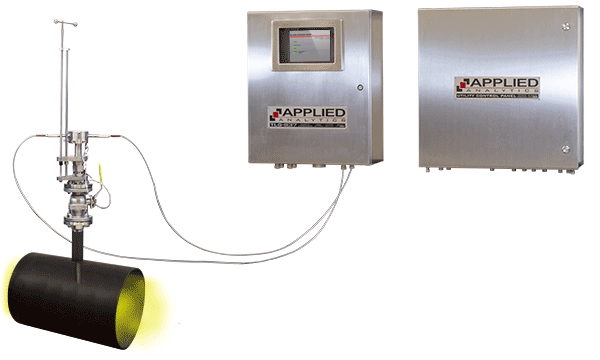top of page
TLG-837 TAIL GAS/AIR DEMAND ANALYZER
The world’s safest tail gas analyzer. TLG-837 continuously measures the concentrations of H2S, SO2, COS, and CS2 in the Claus process tail gas stream. Using the patented in situ DEMISTER sampling probe and a full-spectrum UV-Vis spectrophotometer, this system provides extremely fast, accurate response for tight process control.
-
Continuously measures concentrations of H2S and SO2 and outputs Air Demand signal (user-defined formula)
-
Patented DEMISTER sampling probe with internal sulfur vapor removal
-
Totally solid state with no moving parts, sample lines, or heat tracing — modern design for low maintenance
-
Ultra-safe fiber optic design — no toxic/explosive sample gas in analyzer enclosure
-
Superior Off-Ratio range ( 100:1 < H2S/SO2 ratio < 1:20 )
The Claus Process
H2S is toxic at 10 ppm, entirely lethal at 800 ppm, highly corrosive to equipment, flammable when in excess of 4.3% by volume in air, an unpleasantly odorous at a threshold of less than 1 ppb. Unfortunately, H2S occurs abundantly in the world’s fossil fuel reserves. The sulfur recovery unit (SRU) of a refinery is dedicated to processing the H2S stripped from the hydrocarbon fuel through a series of operations that convert it into water and harmless elemental sulfur, which can be sold and repurposed in fertilizer, gunpowder, and more.
The Claus process is the industry standard for treating the H2S-rich “sour” gas. In a furnace, H2S is combusted:
3H2S + 3⁄2O2 SO2 + H2O + 2H2S. A catalytic converter reacts the products of the combustion to create elemental sulfur in various crystalline forms: 2H2S + SO2 2H2O + 3⁄XSX. As can be deduced from the second reaction above, the typical Claus reaction runs most efficiently when the stoichiometric ratio of H2S to SO2 is controlled at 2:1. The 1st reaction above demonstrates that this ratio is controlled by adjusting the amount of available oxygen.
Air Demand
As demonstrated above, the efficiency of sulfur recovery hinges on the ability to maintain a set H2S/SO2 ratio in the Claus reaction. This adjustment requires knowing the exact H2S/SO2 ratio in the tail gas at all times.
A tail gas analyzer measures H2S and SO2 in the stream and continuously outputs the “Air Demand” control signal, calculated by multiplying the expression (2[SO2] - H2S) by a scaling factor. Additionally, operators sometimes require online measurement of COS and CS2 due to side reactions in the reactor. To analyze tail gas, the TLG-837 detects the distinctive absorbance curve of each chemical analyte and mathematically isolates this structure from the total sample absorbance. In accordance with the Beer-Lambert Law, the TLG-837 correlates the height of each curve directly to the real-time concentration of its corresponding chemical.
DEMISTER Probe
The DEMISTER sampling probe was designed to be lightweight and compact, so it can easily be installed by a single technician. The probe is mounted on the process pipe via flange. The actual interaction between the sample gas and the light signal occurs in the flow cell disk within the probe head, where fiber optic connections on opposite ends transmit light across the path length of the disk.


Check out the AAI TLG Air Demand Analyzer in Action!
Schedule your free seminar on best practices for analyzers or a field walk through to assess your analyzer system!
bottom of page

